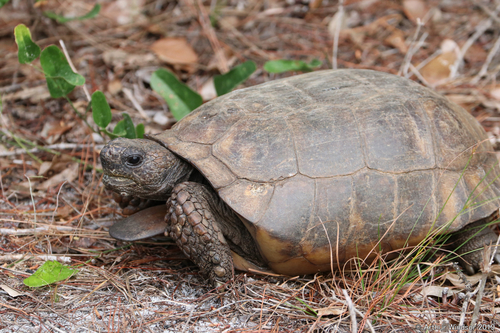
Gopher Tortoise
The gopher tortoise, a keystone species, carves life-giving burrows in sandy soils of the southeastern U.S., sheltering over 350 species. With its sturdy shell and shovel-like limbs, it's an adept digger, promoting ecological diversity and stability in its natural habitat.
40-60 years
Lifespan
3.63 - 6.8 kg
Weight
Length: 23 - 28 cm
Size
Brown, Yellow, Grey-Brown
Color
9-21 years
Age of Sexual Maturity
3-5 days
Age of Weaning
4.9 mph
Top Speed
Vulnerable
Conservation Status
Distribution Range of the Gopher Tortoise
Gopherus polyphemus, commonly known as the gopher tortoise, is native to the southeastern United States. It is primarily found in the coastal plains of the states of Alabama, Florida, Georgia, South Carolina, Mississippi, and Louisiana.
Gopher Tortoise's Habitat
Environmental Conditions
Gopher tortoises inhabit well-drained, sandy soils that are often found in dry, upland areas. These include longleaf pine forests, oak-sandhills, scrubland, and coastal dunes. The climate in these regions is typically subtropical, featuring hot summers and mild winters, which suits the burrowing lifestyle of the tortoise.
Ecological Niche
Gopher tortoises are considered a keystone species due to their burrowing behavior. Their burrows provide crucial habitat and refuge for numerous other species, including mammals, birds, reptiles, amphibians, and invertebrates. These burrows create microhabitats that shelter the occupants from extreme temperatures, predators, and fire. Their diet consists primarily of low-growing plants such as grasses and legumes, which they forage during the day.
Copyright @ Nature Style Limited. All Rights Reserved.
 English
English